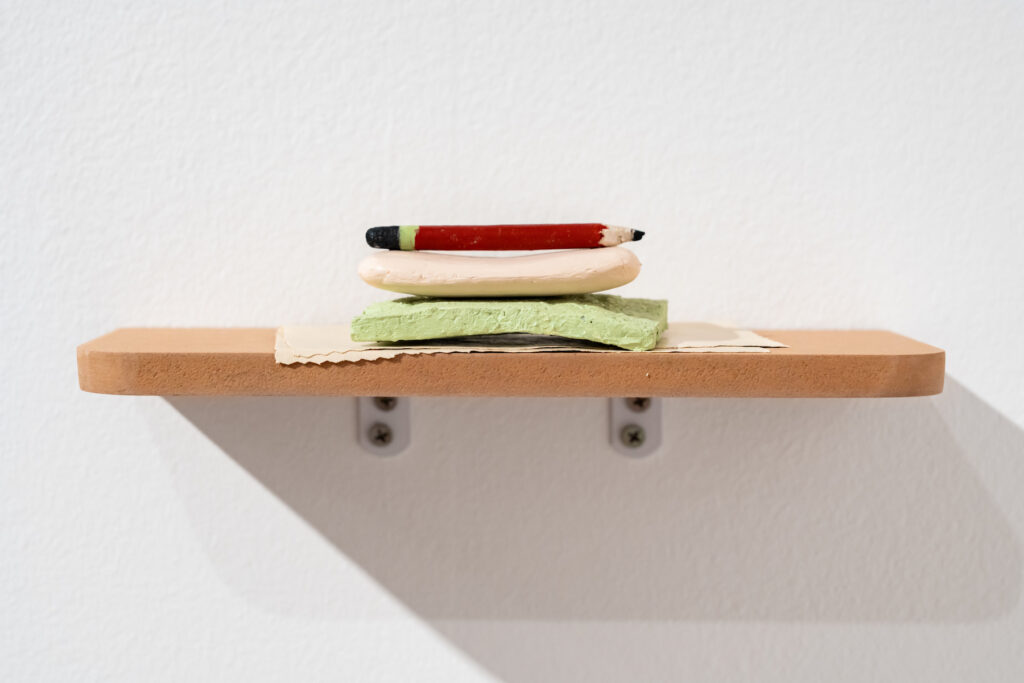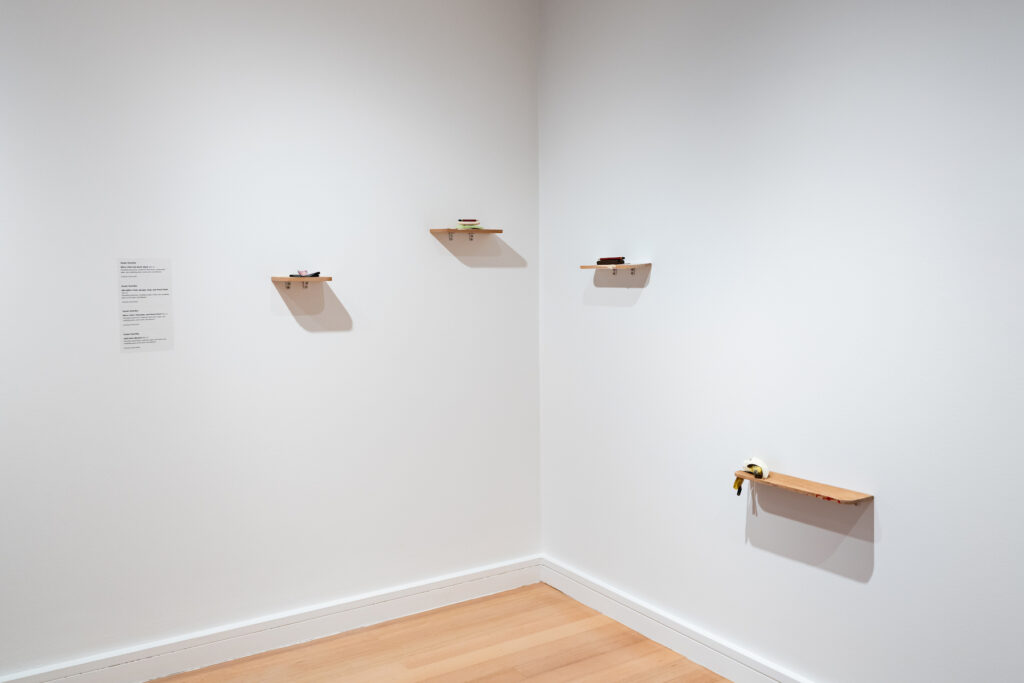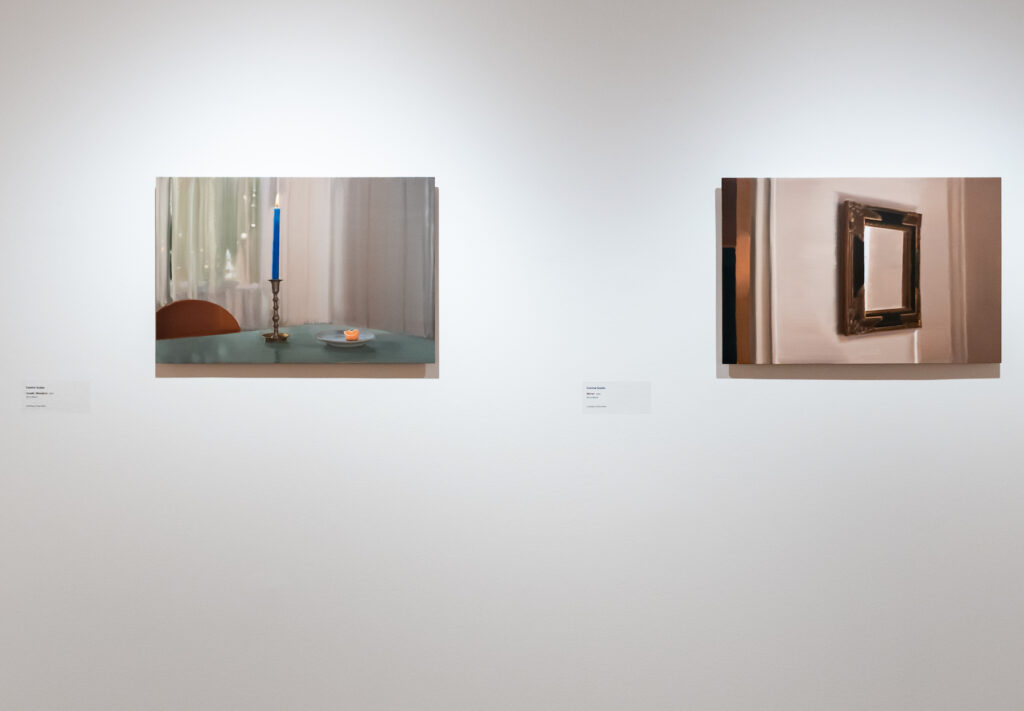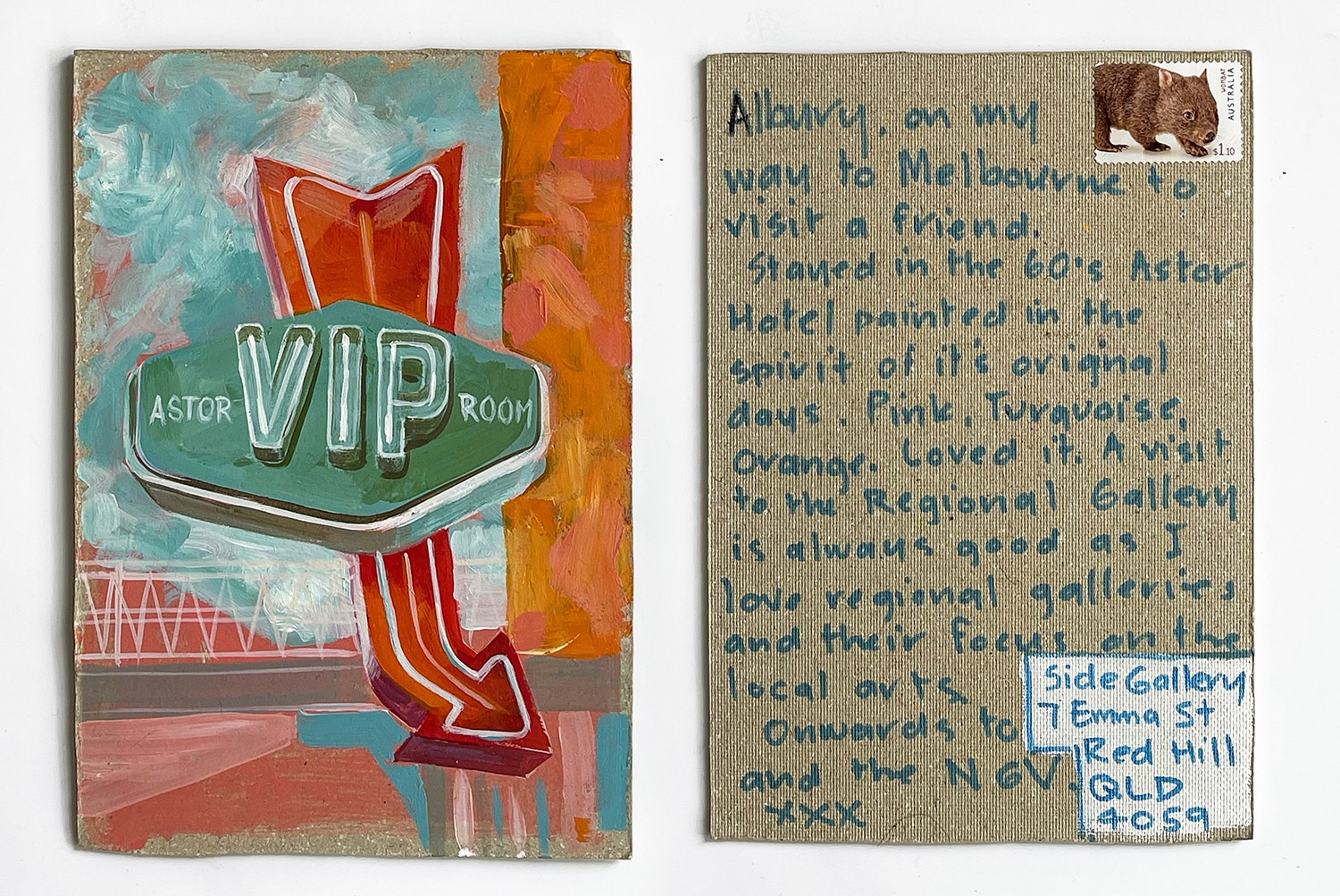
During the first weekend of February, on another scorching hot day in the Sunshine State, I travelled to the southern shores of Cleveland to visit Susan Gourley and Cosima Scales’ collaborative exhibition, Shelf Life. The exhibition is held in the beloved Redland Art Gallery on Quandamooka Country.
I found the gallery eagerly attended by an enthusiastic audience, waiting to listen to the Sunday morning artist talks by Gourley and Scales, and concurrent exhibiting artist, Christina Lowry. I moved my way through the gathered crowd to look at the exhibition before the discussions began and felt relaxed by the careful moments of still life composed before me.
Gourley’s sculptural pieces are cleverly paired with Scales’ paintings. Together they feature images of food, domestic items, interior scenes, and discarded objects. One of the first works I observed was a painting of a half-eaten mandarin with ripped skin, exposing segments of flesh cased within its thin membrane. The singular piece of fruit contrasts brightly with a painterly grey-green background, indicative of a bench or tabletop. On a shelf beside the painting, sits a used teabag balanced in the centre of a mandarin-coloured sponge, the latter delicately placed on a folded yellow micro cloth.
This is not the first time Gourley and Scales have presented work together. After studying at the Queensland College of Art, they co-exhibited at the artist-run initiative, STABLE, in late 2020. Ever since, they have continued to sustain a meaningful relationship through practice and friendship. During COVID, they tended their relationship with small gifts, phone calls, and the occasional studio visit. Being homebound for the years of the pandemic encouraged Gourley to shift her attention to the ‘discarded’ within a domestic setting. While previously she had overlooked the genre of still life, she became increasingly interested in its representation and found connection and inspiration from Scales’ practice.

At the back of the gallery, four shelves display sculptural works by Gourley: an individual clove of garlic rests on a piece of black fabric; a cream coloured micro cloth, a mint green sponge, a smooth bar of soap and a pencil, stack one on top of the other; a bar of dark chocolate is placed beneath a lead pencil; and a half-eaten banana rests with skin peeling down towards the floor. These objects have been laboriously crafted using a mix of cast aside materials such as polystyrene, cardboard, twine, and off-cut timber. Gourley explains that this selection is reflective of a ‘junk aesthetic’. Such an aesthetic is often associated with the ‘readymade’ (cue Marcel Duchamp), and was first cited by Lawrence Alloway in his essay “Junk Culture as a Tradition.”1 Alloway asserts that the “source of junk culture is obsolescence, the throwaway material of cities.” Gourley is interested in contemporary, consumer driven culture which has effectuated a dependence upon single-use goods and easily disposable items. Her sculptures repurpose the discarded, finding value within the unwanted and presenting junk with a level of refinement. In a way, Scales is also concerned with preservation, however her focus is placed more on the preciousness of everyday, ephemeral moments.
Across the room I note a reference to Gourley’s banana sculpture in one of Scales’ paintings. Similarly, the flesh is partially consumed, the skin is peeled, and the surface is marked with slight bruising. The lighting is gentle and subdued and the fruit casts a small dark shadow.

Lighting is a crucial component within Scales’ work. In one painting, light filters into the interior of a house through a sheer curtain; in others it reflects from a polished surface; and in some works it is introduced into a room via the warm glow of a candle. As I wander through the show, I notice candle sticks are a repeating motif within Scales’ paintings. During her artist talk, Scales acknowledges the significance of candles within the genre of still life—often performing as a symbol of mortality in 17th century Netherlandish art—however, she explains that their inclusion is not intended as a historical reference, but rather an opportunity to control light and observe the way that light reflects and interacts across various surfaces.
Scales’ level of attention to the interaction of lighting, form, and surfaces necessitates careful observation. Consequently, her work establishes a calm and meditative energy that is also experienced by the viewer. The artist is intentionally slowing down, drawing attention to (and perhaps protecting), a beautiful yet seemingly mundane moment that may otherwise be overlooked.
Together Gourley and Scales celebrate beauty and significance in moments and objects that are often neglected. I thoroughly enjoyed the level of care and sensitivity expressed through their exhibition.
- Lawrence Alloway, “Junk Culture as Tradition,” in New Forms: New Media I (New York: Martha Jackson Gallery New York, 1960). ↩︎
Thoughts from Gabrielle Bergman, emerging arts worker, writer and curator. @gabriellebergman



